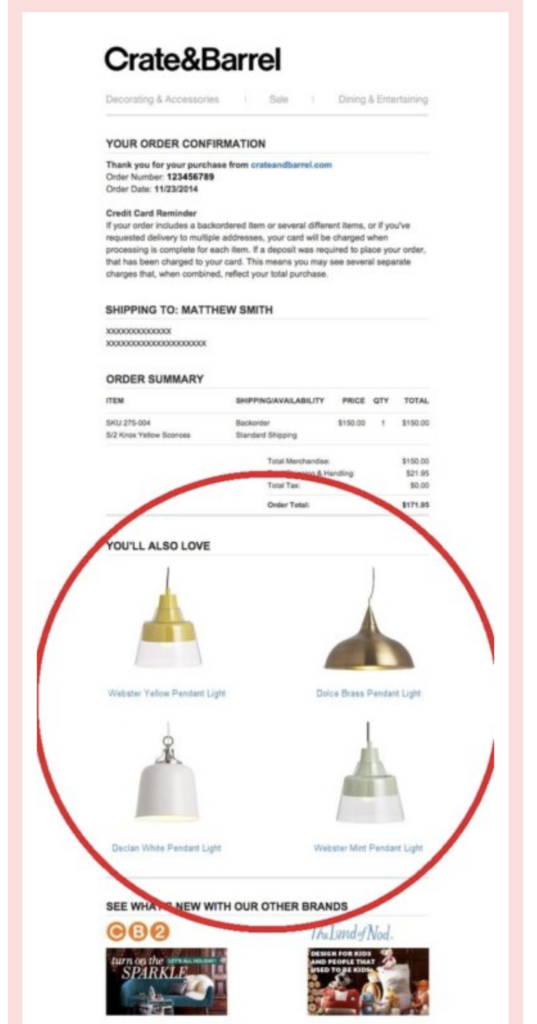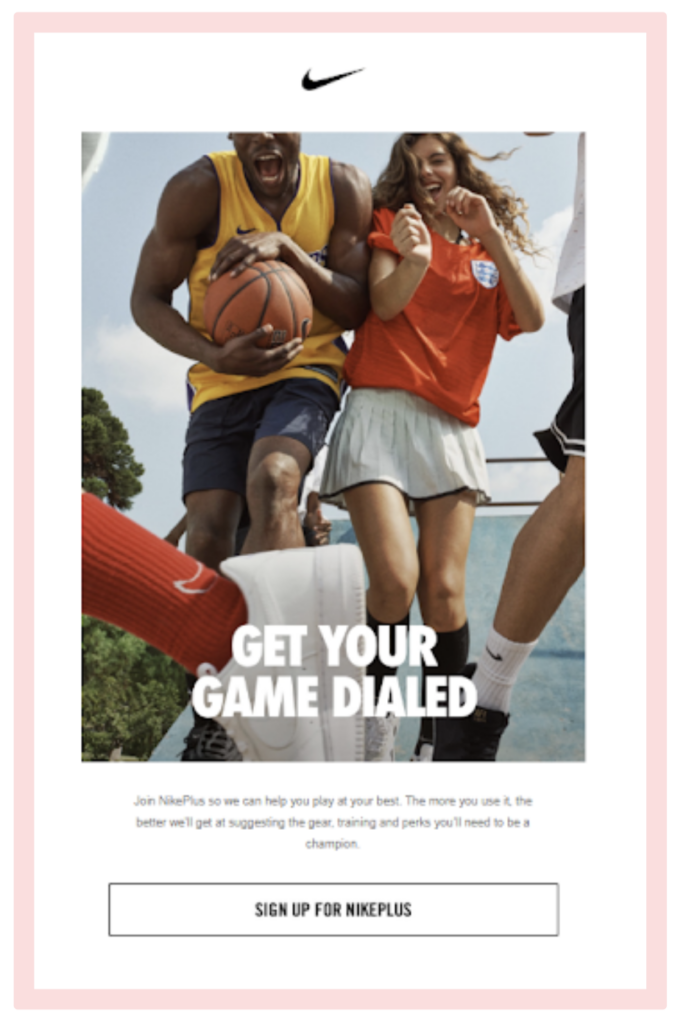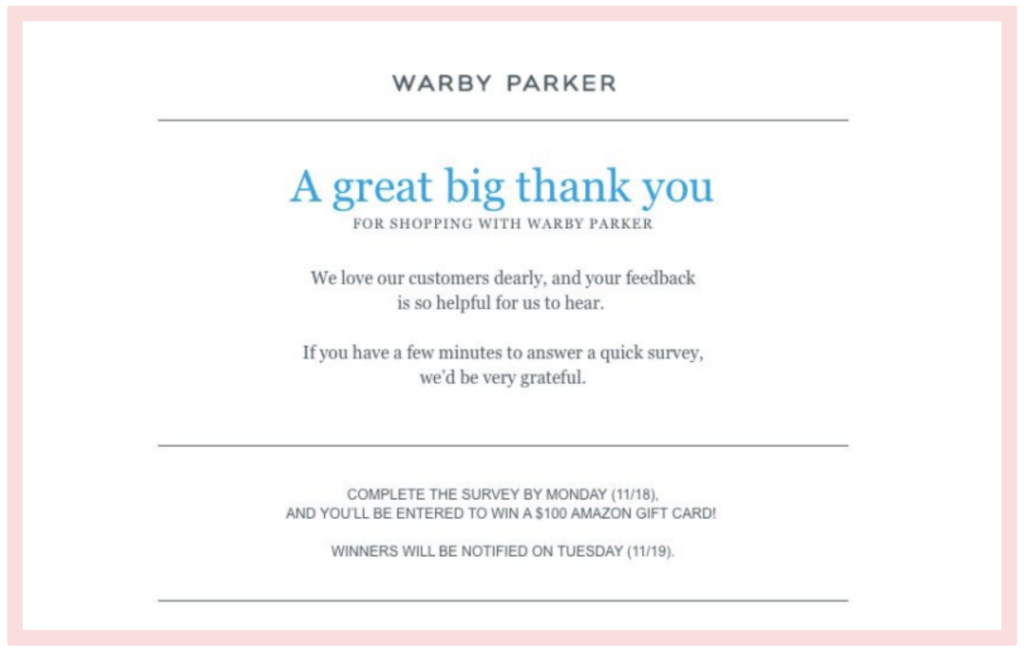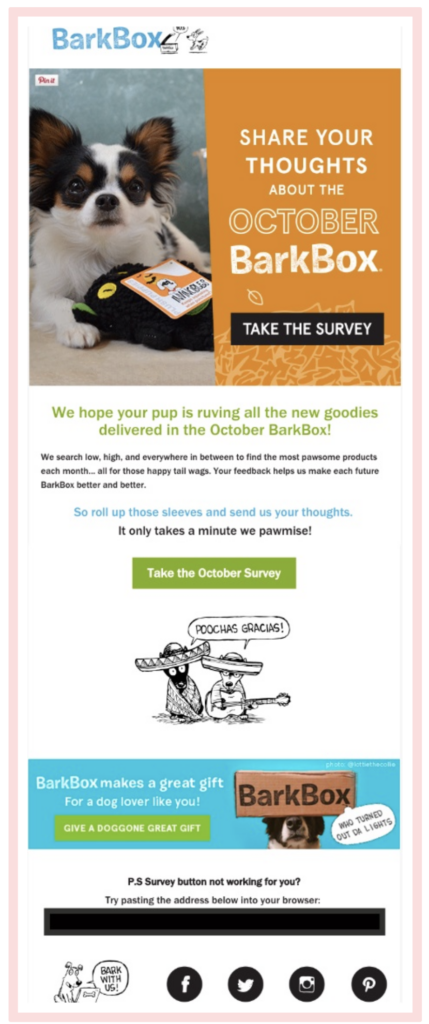Let’s talk about transactional emails—those basic order confirmations, shipping updates, and password resets.
Most of the time, these emails are viewed as purely functional, designed to serve a purpose and nothing more.
But what if I told you that these seemingly simple emails are actually goldmines for brand-building?
With open rates that often range from 40% to 80%, depending on the message, transactional emails are one of the most frequently engaged types of communication across industries.
Your audience cares about transactional emails a lot. They actively seek order confirmations, shipping updates, and password resets, making them some of the most anticipated communications.
But here’s the million-dollar question: Can you leverage these emails to do more than just confirm a transaction?
The answer is a resounding yes!
Transactional emails are a goldmine of opportunities for engagement, loyalty-building, and revenue growth.
Here are 3 ways to turn transactional emails into brand-building opportunities, supported by real-world examples.
1. Monetize Transactional Emails: Drive Additional Revenue Subtly
One powerful way to capitalize on transactional emails is by monetizing them.
While these emails are typically triggered by a purchase, they also provide an excellent opportunity to suggest complementary products—without being pushy.
The key is subtlety. We recommend using only 20% of your transactional emails to cross-sell or upsell. This keeps the sales pitches helpful rather than overbearing, ensuring customers don’t feel overwhelmed.
Real-World Example: Dollar Shave Club’s Subscription Upsell
Dollar Shave Club expertly uses transactional emails, like shipping notifications, to recommend additional grooming products.
Before a customer’s next package ships, they suggest products that could enhance the shaving experience—like body wash or shaving cream. This approach feels natural and adds value to the customer’s order.

Real-World Example: Crate & Barrel’s Product Suggestions
Crate & Barrel uses order confirmation emails to suggest complementary items.
Right after you place an order for a dining set, they might recommend matching table linens.
This tactic works well because it feels like a thoughtful suggestion, not an aggressive sales tactic.

Key Takeaway: Monetizing transactional emails with relevant product recommendations helps customers discover new items that complement their purchase. Keep these suggestions subtle and tailored to enhance customer satisfaction.
2. Create an Ongoing Relationship: Strengthen Customer Loyalty
Transactional emails are opened 8 times more than other types of emails.
This makes them an ideal channel for nurturing long-term customer relationships.
Customers who have recently interacted with your brand—by making a purchase, for instance—are more likely to be open to further engagement.
Building customer relationships is crucial because it costs 5 times more to acquire a new customer than to retain an existing one.
Transactional emails can serve as a bridge for deepening this connection.
Real-World Example: CD Baby’s Memorable Order Confirmation
CD Baby’s legendary shipping confirmation email became famous for how it made customers feel special.
It didn’t just notify customers that their product was on its way—it thanked them in an over-the-top, funny, and heartfelt manner.
This not only delighted customers but made them feel more emotionally connected to the brand.

Real-World Example: Nike’s Membership Program Promotion
After purchasing from Nike, customers are encouraged to join NikePlus, their membership program, in transactional emails.
With incentives like personalized product recommendations and early access to limited-edition items, Nike uses this opportunity to keep customers engaged long after the initial purchase.

Key Takeaway: Use transactional emails to build long-term relationships by telling your brand story, offering exclusive membership benefits, or sharing a thoughtful message that resonates with your audience. This will increase customer loyalty and boost lifetime value.
3. Learn More About Your Customers: Gather Valuable Insights
Transactional emails present an excellent opportunity to learn more about your target audience.
You can ask customers for feedback, opinions, and even reviews, which will provide valuable insights for future marketing strategies.
With transactional emails’ high open rates, this is a golden opportunity to gather data—whether it’s through surveys or product reviews.
Real-World Example: Warby Parker’s Post-Purchase Survey
Warby Parker sends a follow-up survey after a customer makes a purchase, asking for feedback about their experience.
The email is polite, short, and emphasizes that the survey only takes a minute to complete.
This approach not only makes it easy for customers to respond but also provides Warby Parker with valuable insights into their customer satisfaction.

Real-World Example: BarkBox’s Survey with an Incentive
BarkBox, a subscription service for dog owners, sends out surveys post-purchase that offer customers a 15% discount on their next box for taking the time to provide feedback. By telling customers that the survey only takes a minute, they remove any barriers that might prevent participation and increase the likelihood of receiving responses.

Key Takeaway: Use transactional emails to gather insights on your customers’ experiences through surveys or review requests. To boost response rates, make it clear how short the survey is and offer an incentive, like a discount, where appropriate.
Additional Opportunities for Transactional Emails
To further capitalize on the value of transactional emails, consider these additional strategies:
- Refund Confirmation Emails: Just because a customer has returned a product doesn’t mean they’re lost for good. Use refund confirmation emails to recommend alternative products or showcase top-selling items, helping recapture interest and potential future purchases.
- Abandoned Cart Emails: These are some of the highest-converting emails in e-commerce. Including reminders or recommendations based on the abandoned items not only helps recover lost sales but also strengthens brand visibility.
- Cross-Sell in Receipt Emails: After a purchase, include a small section of “you may also like” products based on the customer’s browsing history or recent purchases. Make the upsell feel like a natural extension of their shopping journey rather than a hard push for more sales.
Conclusion
Transactional emails are far more than just a means of confirming a purchase—they are key touchpoints in your customer’s journey.
By strategically monetizing these emails, building long-term relationships, and gathering valuable insights, you can turn simple notifications into brand-building opportunities.
As brands like Dollar Shave Club, Crate & Barrel, and Nike have shown, transactional emails can be powerful tools for increasing revenue, strengthening customer loyalty, and deepening engagement.
So, the next time you’re setting up an order confirmation or shipping email, remember: it’s more than just a transaction—it’s an opportunity to make a lasting impression.
